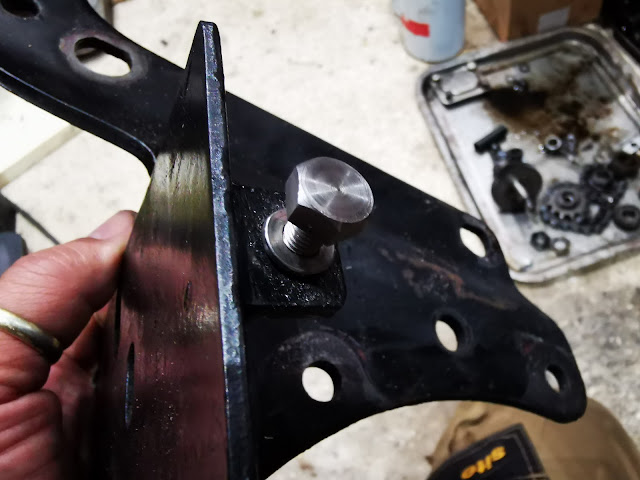I said the next step was to sort out the camshaft, and it was. The reason for that was that I wanted to replace the camshaft bush in the timing side crankcase before the crankcase halves went together and I have done that, because I have found the camshaft and I know what diameter the journal is - I'm confident that the bush can go in as-is, and not need reaming.
So without further ado I can clean the bearing journals and use the Rothenburger MAPP torch to warm up the cases and drop the bearings in, with their spacer and circlip on the drive side.
The crankshaft has been away at Alpha Bearings in Dudley, the UK's premier supplier of big ends for classic motorcycles who have replaced the big end and realigned the crankshaft at what would have been a very good price (and with a one-week turnaround) had the small end eye not turned out to be oval. I was aware that it was very worn and for some reason had no oil hole. The crank came back from Alpha true to less than 0.001" and looking excellent:
The small end eye now has it's lubrication slot. I had a small worry when I thought the mainshaft was not correctly pressed in - though Alpha's had not touched the shafts:
I spoke to Alpha and several people in the club about this suspecting that I knew the answer - it is a taper fit. Alpha explained that if this gap were absent, you could not be sure the taper was pulled up correctly - so that's another one for the memory bank. The AOMCC audience all concurred, so I am happy again.
So next, we are into shimming the crankshaft for the prescribed 0.008-0.012" endfloat. This is the set up I used - the DTI is actually attached to a magnetic stand on the vice anvil, and the heavy crankcase assembly is just sitting on the bench. Not ideal, but I found that if I move the crankshaft against the case using a twisting motion with a screwdriver (flywheel to inner case wall), that cases will not move at all.
In this way, I found that I had a total of 1.4 mm endfloat with no shims. That's about 0.055".
That's a start, but we need the correct endfloat with the rod in the centre of the crankcases. To do that, I used a bore gauge to establish a position where the rod to crankcase measurement was equal on both sides and measured the end float from this position.
I have some 0.3 mm (0.012") and some 0.5 mm (0.020") shims, of 26 mm ID. Time for some calculations:
That leaves me with 0.22 mm end float, or 0.0086". Perfect.
I bolted up the crankcase halves sealing the joint with Threebond 1215 and assembled the cases into the frame, fixing the front engine plates loosely onto the crankcases and then dropping the lot into the frame, retaining it with the single 1/2" stud at the bottom of the down tube.
When you start on the rear engine plates, you do the drive side first, with two studs into the engine and hold the plate to the frame on the gearbox top stud, then pass the footrest bar in. If you don't do it this way you will never get the spacer in.
When that is done you can put the rest of the bolts and studs in with the timing side plate and the magneto platform. If you look closely you will see the bash plate fitted, though you cannot finally bolt this in place if you have not put the sump plate on.
You can see why the magneto platform needs those extra studs and bolts to stop it flapping about.
I made an earth wire for the magneto:
With it all tightened up, I did some trials with the timing case. Turning the engine over with the camshaft, rockers and half time pinion in place sounded awful, so I had to investigate.
That pinion is knackered. I also realised that the camshaft bush that measured up OK was actually oval - I should have looked for that before. It was OK in one direction but when I looked at 90° to the original measurement I could see it was quite worn.
The next step is to pull the engine out again, replace the camshaft bush and reassemble with a new half time pinion.

































